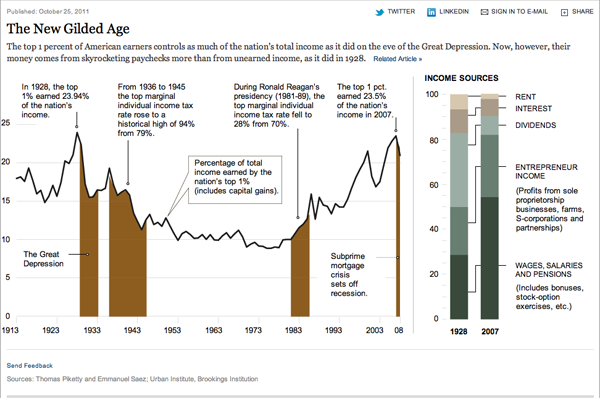Income inequality basically means that the wealth of a country, in this case, is unevenly distributed with most of it falling in the hands of a very few people or families. Think the era of, as the title alludes to, Gatsby and the 1920s before the Crash.
Broadly speaking, a middle class requires a more dilute concentration of wealth, and as this graphic from the New York Times shows, we are seeing—Great Recession aside—the growing wealth of the wealthy at the expense of the rest of the country. Look at, for example, the 1950s, 60s, and 70s when the highest income bracket had its marginal tax rate in the 70% range. The top 1% owned only about 10% of the wealth. Just before the subprime crisis hit, that number was just under 25%.

